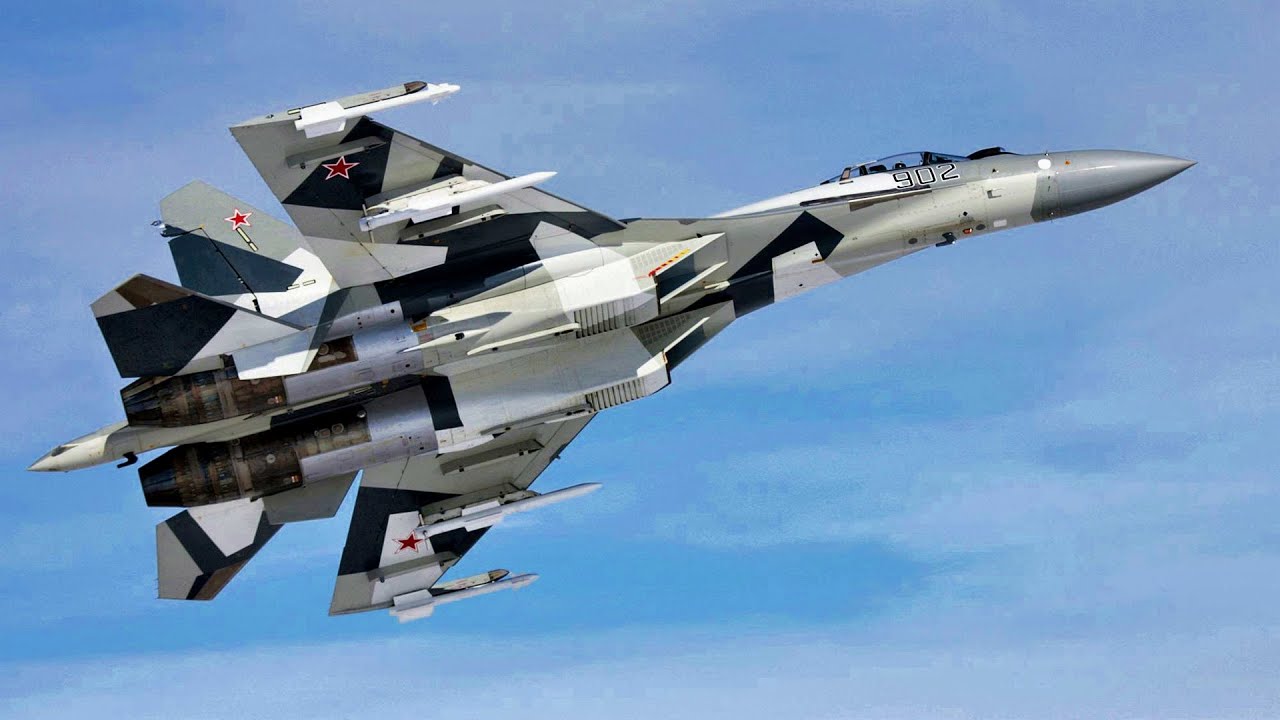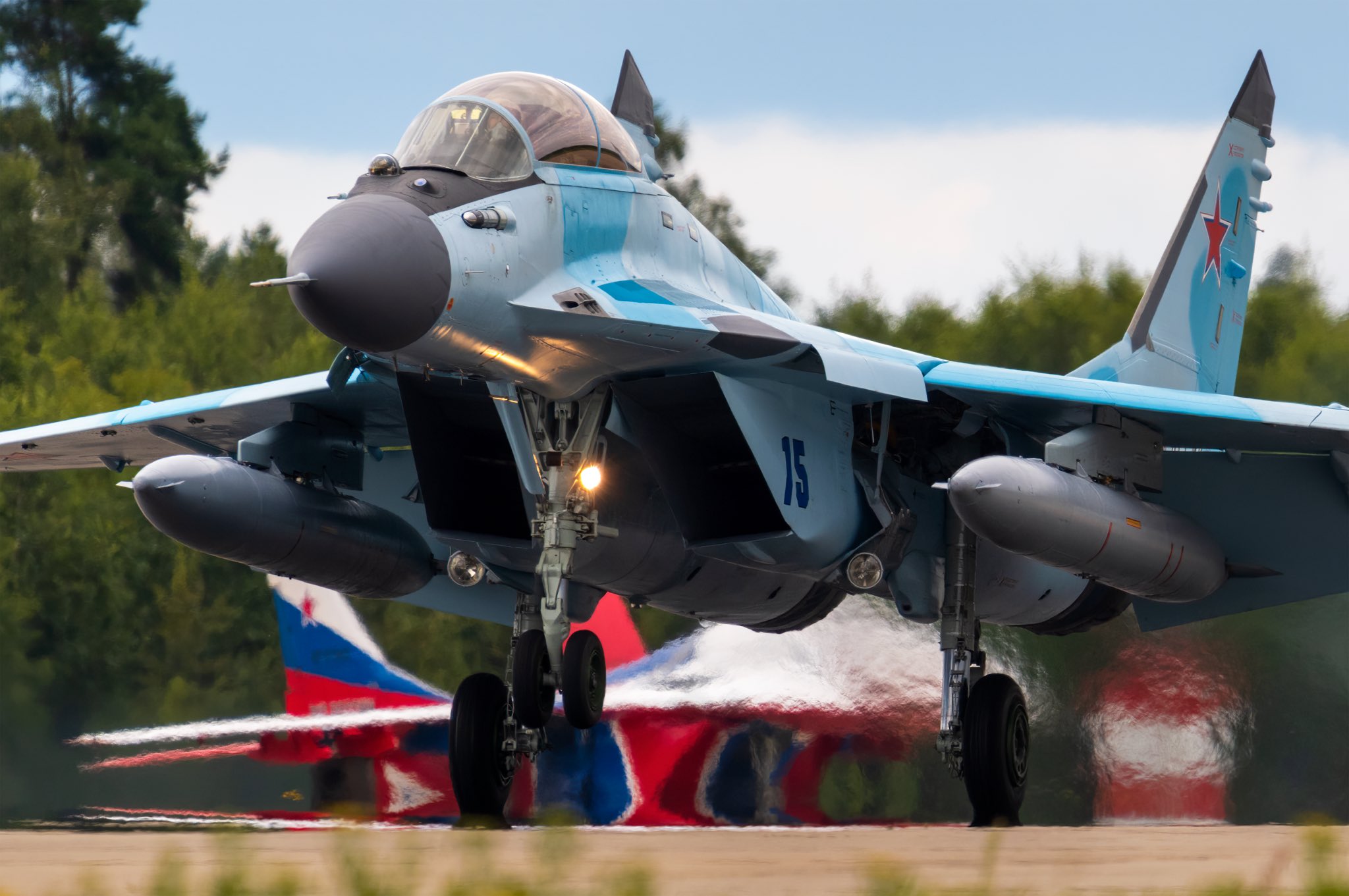SU-35 and MIG-35 are two Russian fighter jets that are competing against each for the Indian MMRCA contract.
India has received a total of seven offers under the lucrative MMRCA tender, including SU-35s and MIG-35s from Russia, under which India seeks to jointly build 114 fighter jets to support its ‘Make in India’ initiative and expand its fleet of fighter jets.
The Sukhoi Su-35 Flanker-E, Russia’s new generation fighter jet, is the latest entry to the MMRCA (Medium Multi-Role Combat Aircraft) race. This, however, is against the backdrop of a massive allegation of scams on previous fighter jet purchases from France – the Rafales.
The Su-35 is Russia’s second offering after the MiG-35. If India selects the MiG-35 or Su-35, then Russia has promised to work with the state-owned Hindustan Aeronautics Limited (HAL) as its strategic partner under the ‘Make in India’ initiative.
Speculations have already begun by those working in New Delhi on the capabilities and cost of the two fighter jets.

SU-35 vs MIG-35
The Sukhoi Su-35, termed a ‘4++ generation’ fighter jet, is a super-maneuverable aircraft. Designed by Sukhoi Bureau and built by the Komsomolsk-on-Amur aircraft plant, the single-seat, and twin-engine aircraft is the derivative of the Su-27 heavyweight fighter, which was built to take on the elite Western Block’s air fleet.
The MiG-35, on the other hand, is designed by Mikoyan and is also a 4++ generation fighter jet which is an enhanced development of the MiG-29 that was built with the intent to deploy it closer to the frontlines. While the Su-35 came into force in 2014, the MiG-35 entered service only in 2019.
While both the fighter jets, the MiG-35, and the Su-35, deploy similar technologies, the two are different in their fundamental designs. Although an assessment of their capabilities and key differences can provide insight into the nature of both programs and their possible futures.
The Su-35 is designed with the intent and mission to gain air superiority, thereby capable of spotting and destroying targets at air and ground. With the help of Irbis-E radar, the range of detection is over 400kms and can damage up to 30 airborne targets simultaneously.
The MiG-35, however, primarily engages with air targets in any weather, day or night. The MiG-35, a multifunctional frontline fighter, employs the first active electronically scanned array radar (AESA), which is more sophisticated and lighter than Irbis-E. Despite this, the Su-35 is preferred as it has the edge over the MiG-35 in situational awareness.
Deploying the same Mach 6 platform that has powerful sensors that are capable of engaging aircraft at higher ranges, both the fighter jets are designed to be compatible with the new R-37M hypersonic air-to-air missile that gives the fighters a significant advantage over other adversaries.
This also enables both the fighter jets to deploy Kh-35 and Kh-31 missiles but MiG-35 benefits from the access it has to the new Kh-38 missile.

The Su-35 successfully manages to accomplish the long patrols from the home base, carrying out strikes against the sea, air, and land targets, retaliating against enemy attacks, and protecting installations and also battlefield interdiction.
The MiG-35, on the other hand, is the most preferred fighter to carry out air combats, aerial reconnaissance, striking surface targets, and providing support to troops and forces at land.
Both Su-35 and MiG-35 are the only two fighters that are active in the world to be able to employ technologies that provide super-maneuverability, according to experts talking to the EurAsian Times. Similar significant improvements have been made to the designs of both fighter jets in the efficiency of engines, endurance, and bigger fuel storage.
In terms of the standard payload of missiles, both fighter jets have been superior to their older versions. While Su-27 had a payload of 8, the Su-35 has 12 to 14, the MiG-29 had 6, and MiG-35 has a payload of 8 missiles. The speed of both the fighters is at the capacity of reaching around Mach 2.25, while the Su-35 has a higher operational altitude and hence a much longer range.
Though the Su-35 and the MiG-35 share similar designs and technologies, they are intended for different roles. Each of them has an advantage over the other in their respective role. The Su-35, being a higher-end platform, is better equipped to be deployed against elite heavyweights such as the F-22 Raptors, while MiG-35 can still hold its ground against even higher-end adversaries and also retain considerable performance advantages.
The Su-35 does not only appear to be the more powerful of the two, but it also is the expensive one. The MiG-35, however, retains significant advantages, such as operational costs.
The operational cost of the MiG-35 is 20% lesser than that of its predecessor, the MiG-29, making it one of the high-end fighters available at an economical price. This also means that the cost of training pilots will also be lower compared to the Su-35.
Due to its ability to operate from shorter runways and spend less time on the ground, MiG-35 is less prone to airstrikes on airbases than the heavier Su-35.
The Indian government is likely to be carefully weighing these factors with the situational requirements on ground zero before taking the final call. Even though both the jets are far away from winning the Indian MMRCA tender, it will be interesting to see which one New Delhi shortlists in the next stage.




